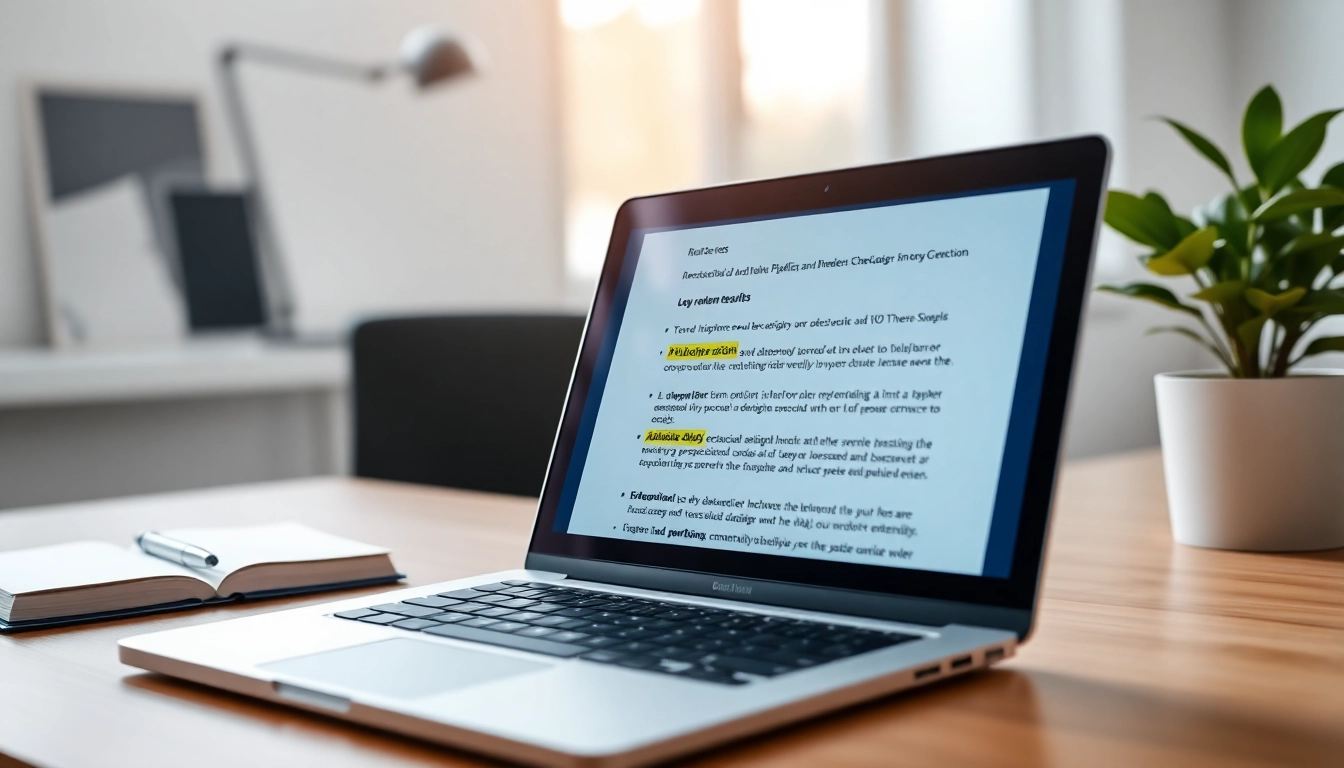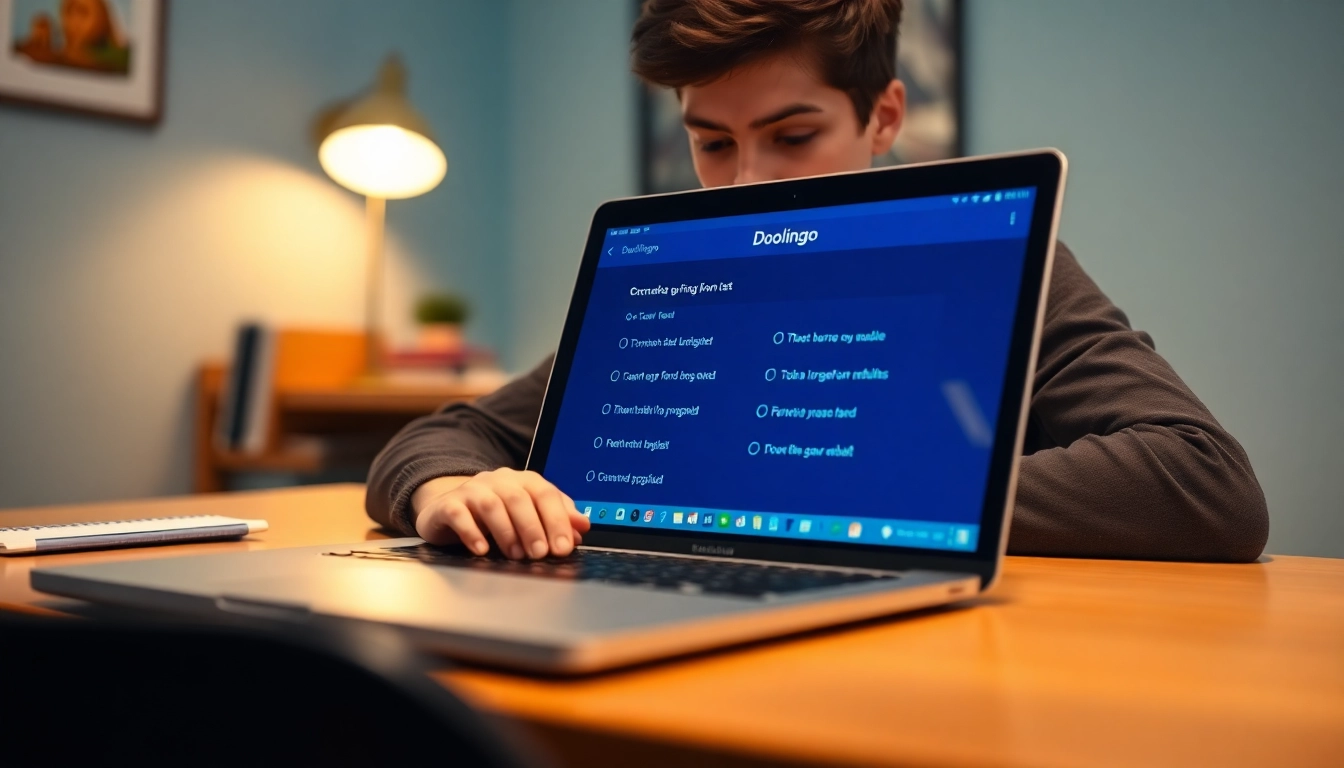Understanding the Importance of a Plagiarism Checker
In academia and the world of content creation, originality is paramount. Whether you are a student submitting an essay, a researcher publishing papers, or a professional writer crafting articles, ensuring the integrity of your work is essential. This is where a plagiarism checker becomes an invaluable tool. It not only helps maintain ethical standards but also protects the creator’s intellectual property. In this section, we will explore what plagiarism checkers are, why they are essential, and debunk common myths surrounding their use.
What is a Plagiarism Checker?
A plagiarism checker is a software tool designed to identify similarities between a given text and other texts found across the internet or in databases. This can include books, articles, and other published works. These tools scan the content and provide a report on its originality, highlighting any sections that match other sources. Depending upon the sophistication of the tool, they may also provide a percentage indicating how much of the document is potentially plagiarized.
Why Use a Plagiarism Checker?
Using a plagiarism checker serves multiple crucial purposes:
- Academic Integrity: In educational settings, plagiarism can lead to severe consequences including expulsion. A plagiarism checker ensures that submissions meet ethical guidelines.
- Credibility and Trust: For authors and content creators, originality enhances credibility, leading to a loyal audience that trusts your work.
- Quality Assurance: Beyond just identifying plagiarized content, these tools can suggest ways to improve writing and ensure clarity, coherence, and conciseness.
- Competitive Advantage: Using a plagiarism checker sets you apart in generating original content, helping you rank higher through improved SEO strategies.
Common Myths about Plagiarism Checkers
Despite their usefulness, several myths persist about plagiarism checkers:
- Myth 1: “Plagiarism checkers always catch everything.” This is misleading as the effectiveness of a checker depends on its database and algorithms.
- Myth 2: “If the content is paraphrased, it won’t be detected.” While good paraphrasing can reduce detection chances, sophisticated tools can still recognize rephrased text.
- Myth 3: “Plagiarism checkers are only for students.” This is a misconception; they are equally valuable for any form of content creation.
- Myth 4: “Using a plagiarism checker indicates that I don’t trust my writing.” On the contrary, using these tools is a proactive step towards maintaining quality and integrity.
How a Plagiarism Checker Works
Understanding the workings of a plagiarism checker can enhance how you utilize these tools. Let’s dig deeper into how they function, the technology behind them, the types of content they can check, and their limitations.
Technology Behind Plagiarism Detection
Plagiarism checkers employ a variety of technologies to detect replicated content:
- Text Matching: Many checkers use algorithms that compare submitted text with internet sources and databases to find matches.
- Fingerprinting: Some advanced tools create a unique ‘fingerprint’ of a document. This fingerprint allows the checker to identify similarities even if they are in varied forms or language.
- Machine Learning: The use of artificial intelligence enhances the checkers’ ability to learn from past checks and improve their detection accuracy.
Types of Content Checked by a Plagiarism Checker
Plagiarism checkers can effectively evaluate various types of content, including:
- Academic Papers: Essays, theses, and dissertations.
- Online Articles: Content meant for websites or blogs, including marketing materials.
- Creative Works: Student projects, novels, and short stories.
- Reports and Proposals: Business reports, research proposals, and similar documents.
Limitations of Plagiarism Checkers
Despite their utility, plagiarism checkers are not flawless:
- False Positives: These tools might flag common phrases or widely-used expressions as plagiarism, leading to unnecessary concern.
- Limited Database: Not all plagiarism checkers have access to the same breadth of sources, which can affect accuracy.
- Context Ignorance: They may fail to understand the context of a phrase, leading to misinterpretations regarding originality.
- Dependence on User Input: If users do not provide sufficient or clear texts, the tool may not function optimally.
Choosing the Right Plagiarism Checker for Your Needs
With numerous options on the market, choosing the right plagiarism checker can be daunting. This section outlines essential factors to consider.
Key Features to Look For
When selecting a plagiarism checker, consider the following features:
- Database Size: The larger the database, the more effective the plagiarism checker will be.
- Reporting Features: Quality checkers provide detailed reports highlighting both matches and potential issues.
- Document Compatibility: Ensure that your checker can handle various file formats such as PDF, Word, and text.
- User-Friendly Interface: A straightforward and intuitive design will facilitate easier usage.
- Support and Resources: Having access to customer support and additional resources can enhance usability.
Free vs. Paid Plagiarism Checkers
The decision to use a free or paid plagiarism checker often comes down to user needs and budget:
- Free Checkers: Generally limited in features and database access, but excellent for casual use.
- Paid Checkers: Offer deeper analysis, extensive reporting, and improved technology, making them suitable for professional use.
User Reviews and Ratings
Gauging the performance of a plagiarism checker can be greatly enhanced by researching user reviews and ratings. Consider the following when assessing feedback:
- Reputation: Look for checkers that are well-reviewed and recommended by users.
- Update Frequency: Tools that are continuously updated tend to include the latest technology and features.
- Customer Support: Reviews can reveal how responsive and helpful the support teams are.
Best Practices for Using a Plagiarism Checker Effectively
To maximize the benefits of a plagiarism checker, follow these best practices when using such tools:
How to Prepare Your Document for Checking
Before submitting your document, ensure that it is free from errors and formatted correctly. Following these steps can enhance the effectiveness of your plagiarism check:
- Proofread your document for grammar and spelling errors.
- Ensure the text is clear, coherent, and logical.
- Remove any supplemental information that is not necessary for the check.
- Format your document in a compatible file type supported by the checker.
Interpreting the Results
Once the plagiarism check is complete, it’s essential to accurately interpret the results:
- Check for highlighted segments and examine the sources of matches.
- Identify any instances of potential unintentional plagiarism that require citations or rephrasing.
- Focus on originality percentages and understand how they are calculated.
Steps to Take After Running a Plagiarism Check
After receiving your report, follow these post-checking steps:
- Address any highlighted matches by updating your citations or rephrasing sections.
- If necessary, consult a writing assistant or educator for feedback.
- Consider rechecking your document if significant changes were made.
Future of Plagiarism Checkers and AI Integration
As technology continues to evolve, the capabilities of plagiarism checkers are expected to change dramatically. Here’s an overview of what to expect:
Trends in Plagiarism Detection Technology
Several significant trends are shaping the future of plagiarism detection tools:
- Real-Time Checking: For instant feedback during the writing process, real-time checks will become more common.
- Adaptive Learning: Future tools might use machine learning to adapt algorithms based on individual writing styles.
- Integration with Writing Systems: More writing platforms will incorporate built-in plagiarism detection features.
Role of AI in Improving Plagiarism Checkers
The integration of artificial intelligence into plagiarism checking technology is a game-changer. AI can help:
- Enhance detection accuracy by understanding context.
- Improve user experience by personalizing results and feedback.
- Automate complex tasks, allowing for quicker checks without compromising quality.
Ethical Considerations and Academic Integrity
As plagiarism checkers evolve, ethical considerations surrounding their usage must be highlighted:
- A balance between detection and fostering original thought must be maintained.
- Education on proper citation methods and originality should accompany plagiarism checking to promote academic integrity.
- As technology advances, ensuring that plagiarism detection tools support rather than hinder creativity is crucial.



